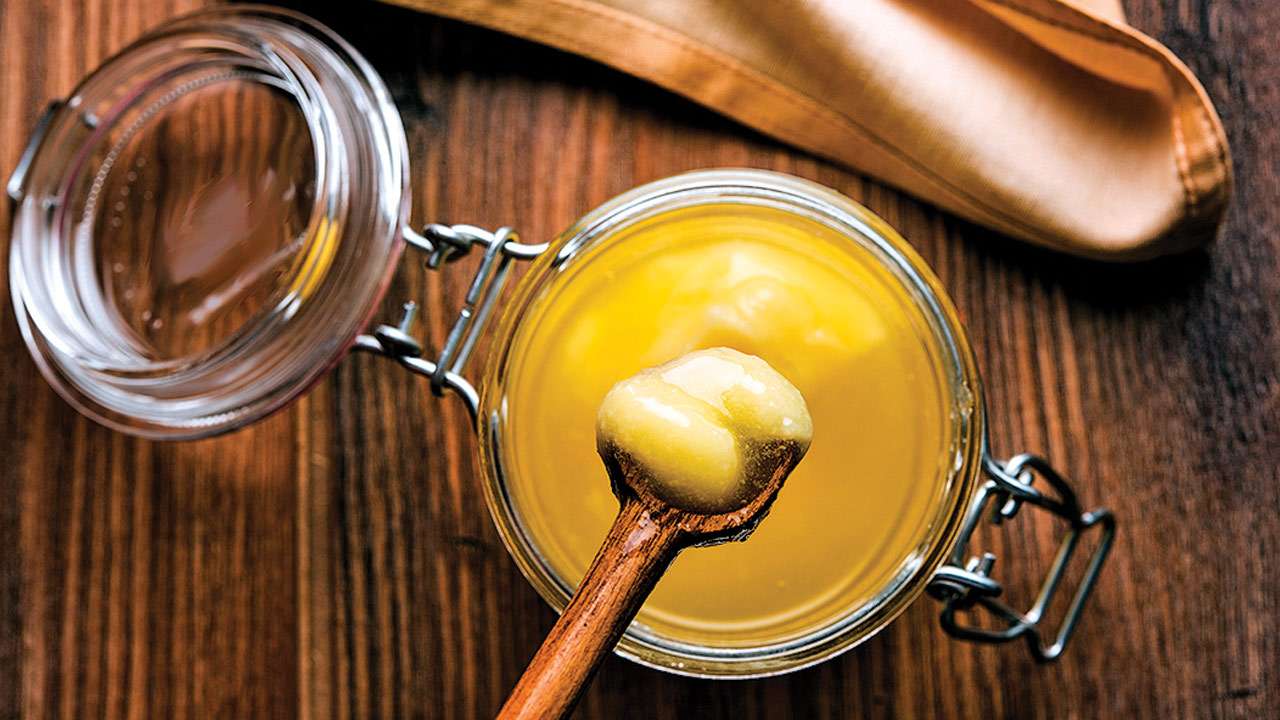
For Indians, ghee is a religious matter rather than a food item. It has dominated most Indian kitchens for centuries. Use of ghee in sweets is viewed by customers as the symbol of their quality and richness. But the metabolic epidemic comprising diabetes, heart disease, obesity and hypertension, which have emerged in the recent two decades in India has put a question mark on this Indian favourite cooking medium.
There’s differences of opinion among health professionals about the goodness and badness of ghee. To add to the chaos some babas, gurus, bapus and other godmen advocate its usage in our diet. A lay man is in confused by these conflicting streams of advice. His medical doctor advices him to avoid it whereas his spiritual guru advises him otherwise. So what should he do?
Today, I’m going to clear all your doubts related to eating ghee so you can safely include it to your daily diet. Before we go ahead, let’s take a look at its nutritional information.
One tablespoon (15 g) of ghee has approximately 135 calories, all of which come from fat. That small amount of ghee has 15 grams of total fat and 9 grams of saturated fat, or 45 per cent of the recommended daily value. A tablespoon of it also has 45 milligrams of cholesterol, or 15 per cent of the daily value. It is free of sodium, carbohydrates, fibre, sugar and protein.
I suggest having up to two teaspoons (15 g / 1 tablespoon) of desi ghee per day to get all benefits. But two teaspoons providing your diet isn’t loaded with cheese or fried foods earlier on.It is 99.9 per cent fat and one per cent moisture along with some fat-soluble vitamins, charred milk protein fractions among others. Even though it might be a “healthy” saturated fat, it’s not healthy to eat in large amounts. Remember, excess of anything is bad! So why push the limits with ghee, even if you love it?
Instead of focusing on individual nutrients or individual foods, the whole diet needs to be considered. For those who wish to make a choice, it may come down to taste and function. It has a nuttier and smoother flavour than butter. It also has a higher smoke point than butter, which means it can withstand higher temperatures, where butter may burn. It is considered one of the best oils for baking, sautéing and deep frying. Since butter and ghee are similar in terms of nutrition and implications for health, you don’t need to cut them out completely. Instead, watch your intake and eat it in moderation.
No. Some Indian restaurants use partially hydrogenated vegetable oil, which is known as vanaspati or Dalda or “vegetable ghee”, in place of pure ghee because of its lower cost. This is very high in trans fat. Trans fat is considered extremely harmful and it can cause serious health conditions. Vegetable ghee or vanaspati or Dalda or any other ghee substitute = fake ghee.
Ghee prepared using cow’s milk is a good source of fat-soluble vitamins and healthy fatty acids. If we do back to back comparison, cow’s ghee is better option. Daily consumption of one to two teaspoons of cow’s ghee along with rice, roti, khichdi, etc improves the digestion process, improves absorption of nutrients from food, lubricates large intestines and prevents constipation. Don’t consume more than two teaspoons of it a day for optimum benefits.
Yes. Just make sure that you consume it in moderation. You can add a little ghee to rotis, parathas, dal, curry, etc. Avoid Indian sweets because they contain lot of sugar.